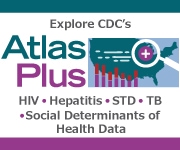Latent TB Infection in the United States – Published Estimates
Latent TB infection prevalence data is critical in order to track the United States’ progress in testing and treating persons with latent TB infection. More than 80% of TB cases in the United States result from longstanding, untreated latent TB infection. TB disease is a nationally notifiable disease; however, latent TB infection is not reported to CDC. CDC currently relies on national prevalence estimates and is exploring systems and methods to determine the best ways to measure prevalence of latent TB infection in the United States in the future.
Published Estimates for Latent TB Infection Prevalence in the United States
CDC’s primary source for estimating latent TB infection prevalence is the TB infection component of the National Health and Nutrition Examination Survey (NHANES), which was most recently conducted as part of the 2011–2012 NHANES. Based on NHANES data, CDC estimates that up to 13 million people in the United States have latent TB infection. However, the prevalence of latent TB infection could vary between certain populations.
The table below describes current estimates published by CDC. CDC also collaborated with external partners to update estimates of the prevalence of latent TB infection in the United States through existing data sources and novel methods. Those estimates are included and vary based on assumptions used in their development and can be useful in developing different approaches to considering which populations are at risk of TB disease in the United States. Although there is some variation, all published estimates conclude that millions of people in the United States have latent TB infection. Without treatment, people with latent TB infection are at risk for developing TB disease.
Latent TB Infection in the United States – Published Estimates
| Publications | Methods/Data Sources | National Estimate as Percent [confidence limits or bounds] | National Estimate in Population [confidence limits or bounds] | Population Denominator or any Restrictions | Time Frame |
|---|---|---|---|---|---|
| Miramontes R, et al. (2015)
|
NHANES, persons age 6 years and older, tuberculin skin test (TST) positive based on cut-point of ≥10 mm for the mean of up to 3 measurements, adjusted for non-return for TST reading and mm digit preference | 4.7% [95% confidence interval 3.4-6.3] | 13.2 million persons [95% confidence interval 9.6-17.8 million] | 2011 American Community Survey data restricted to match NHANES population of noninstitutionalized civilian U.S. population ages 6 years and older | 2011-2012 |
| NHANES, persons age 6 years and older, measured as positive by QuantiFERON-TB Gold In-Tube test, adjusted public data set for coding positive per manufacturer’s package insert | 5.0% [95% confidence interval 4.2–5.8] | 14.1 million persons [95% confidence interval 11.8–16.4 million] | 2011 American Community Survey data restricted to match NHANES population of noninstitutionalized civilian U.S. population ages 6 years and older | 2011-2012 | |
| Haddad MB, et al (2018)
|
Estimation based on 1) annual TB case counts averaged 2008-2015 by county, 2) estimate of recent transmission (RT) averaged 2011-2015 by county, with assumption that all cases not considered RT are LTBI reactivation, that non-genotyped TB cases have the same RT percentage as genotyped cases, and uniform 0.1% annual risk of reactivation from LTBI. | 3.1% [uncertainty limits 2.2-5.2% based on higher or lower risk of reactivation assumptions] | 8.9 million persons with untreated latent TB infection [uncertainty limits 6.3-14.8 million based on higher or lower risk of reactivation assumptions] | 2010 U.S. Census population | 2011-2015 |
| Vonnahme LA, et al (2019)
|
LTBI prevalence in the U.S., 2011-2012, estimated as positive QuantiFERON-TB Gold In-Tube test, after excluding persons who reported having received prior treatment for active TB or LTBI. | Not published | 12.6 million persons [95% confidence interval 10.5–14.7 million] with untreated latent TB infection | 2011 American Community Survey data restricted to match NHANES population of noninstitutionalized civilian U.S. population ages 6 years and older | 2011-2012 |
| Mancuso JD, et al. (2021)
|
Cascade of self-reported engagement in the care of latent TB infection in the U.S., 2011-2012, among persons 6 years and older with a positive QFT result | 5.0%
[95% confidence interval 4.2-5.8] |
14.0 million
persons [95% confidence interval 11.9-16.5 million] |
2011 American Community Survey data restricted to match NHANES population of noninstitutionalized civilian U.S. population ages 6 years and older | 2011-2012 |
| Mirzazadeh A, et al. (2021)
|
LTBI prevalence in 2015 estimated by creating mathematical model using all TB disease cases reported during 2013-2017 | 2.7% [95% confidence interval 2.6-2.8 | 8.6 million persons [95% confidence interval 8.3-8.8 million] with untreated latent TB infection | 2015 American Community Survey midpoint estimates for state population size by age group, race/ethnicity, and nativity. | 2013 – 2017 |
Current and Future Surveillance for Latent TB Infection
CDC is working to help state and local TB programs increase their surveillance for latent TB infection. The underpinnings of a national latent TB infection surveillance system (TB Latent Infection Surveillance System or TBLISS) are under development. CDC is continuing to work with its partners to define the scale and scope of TBLISS. The TB Epidemiologic Studies Consortium (TBESC) has developed a real-time case management and surveillance system for latent TB infection. This system could form part of the basis for latent TB infection surveillance in the future.
